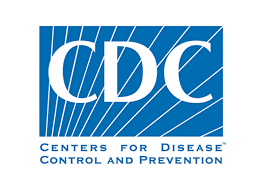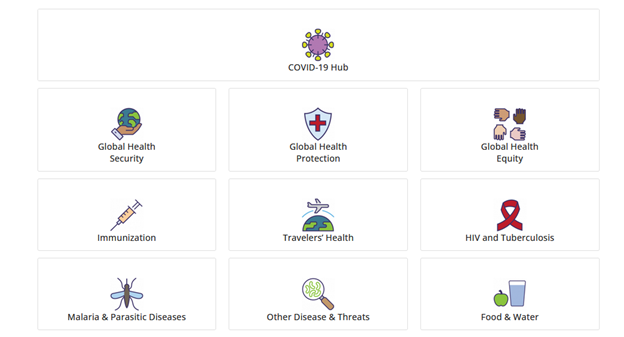Online Course
NRSG 780 - Health Promotion and Population Health
Module 13: Critical Issues in Population Health
Transnational Trends
World health is a priority for all. This is a foundation of the medicine and public health initiative. Many health problems transcend national boundaries and the health status of the populations of all countries directly affects the global economy. Two million people cross international borders every day.
The pace of international travel makes the spread of communicable diseases a priority for everyone. In addition to the current COVID-pandemic, influenza, Avian Flu, SARS, West Nile Virus, STDs, HIV/AIDS, TB and Ebola, vaccine resistance, and antibiotic resistance have alerted the general public to the vulnerability of the population.
Global health is also negatively affected by the spread of toxic and hazardous agents – fumes, asbestos, fire, weapons, banned and illegal substances and the marketing of unhealthy products across national boundaries.
Political changes can dramatically influence the health of a nation. The experience of Ukraine, Afghanistan and Iraq showcase how political change and war influence global economies, negatively affect the health status of populations and change the mindset of generations.

CDC tracks global health threats and works to prevent, detect, and respond to these threats.

For more information review the CDC Global Health website available at https://www.cdc.gov/globalhealth/index.html#global-health-issues

The World Health Organization released its list of 13 urgent health challenges the world will face over the next decade. For more information review the list available at https://www.advisory.com/daily-briefing/2020/01/15/who-health-challenges
Transnational trends in global health:
- Double burden of communicable and non-communicable diseases
- Population growth and demographic changes
- Environmental degradation
- Globalization of markets with increased free trade
- Increasing urbanization and rural deprivation
- Widening gap between rich and poor
- Continuing reduced opportunity and lower status of women
- Changing nature of community and social support systems and societal democratization
- Development of communication
- Rising aggression, conflicts and human made catastrophes
- Increasing transfer of hazardous work to developing countries
As noted throughout the semester, although health indicators for the U.S. show that our health is generally improving, in too many sectors of the population the health indicators reflect those of many developing countries, particularly among the poor and rural populations.
In terms of the socioeconomic status of the world’s population, over 80% of the world’s population live in nations that collectively possess less than 20% of the world’s wealth and productive capacity. The poorest 40% of the world’s people have less collective wealth than the top 400 wealthiest people in the world. The gap between rich and poor nations is getting wider.
Economic and social development and health improvement are often hard to achieve among the poorest of nations. Inadequate natural resources that have to be shared among too many people, poor planning and misuse of resources, corruption and military turmoil influence the health of many countries.
Key Factors Influencing World Health
Population Growth
The population experienced linear growth until the late 18th century, exponential growth until the 1950s, and remains in a period of hyperexponential growth. In North America, this has been further compounded by migration. Despite advances in technology, the rate will reach a maximum capacity or ecological limit.
Migrations
Migrations have brought people across borders, across continents and from rural to urban environments. At the beginning of the 20th century, 90% of the population was rural. Now, more than 50% is urban. The growth of cities presents a series of complex problems, particularly in developing countries. Water, food supply, sanitary services, fuel and shelter are often inadequate to cope with the numbers. This translates into increased transmission of infectious disease, drug abuse and social unrest.
Health Problems
Many health problems are associated with the interaction of three forces:
- infectious disease, especially among infants and children
- malnutrition
- uncontrolled population growth
One billion serious illnesses each year are a result of common infectious diseases. Each year in Africa, over one million deaths are due to malaria. Three million children die each year of diarrhea, four million from respiratory infections, and three million from vaccine preventable diseases and malnutrition. AIDS cases in Africa alone are in excess of four million. As of November 2, 2025 , worldwide there have been over 778, 900, 250 confirmed cases of COVID 19 and over 7. 1 million deaths. As of December 31, 2023, 5.47 billion vaccine doses have been administered.
Industrial development is causing serious environmental damage and occupational diseases. Much of this is by multinational corporations that are assured of a supply of cheap labor, often child labor, and can avoid regulations enacted in developed countries that protect the health of workers and environmental quality. Laws governing worker compensation are often non-existent. Some of the worst health harming habits of industrialized nations, cigarette smoking and traffic injury are becoming increasingly common in developed countries.
How to Enhance Health Status of Developing Nations
A series of problems have been identified that, if addressed, can work to enhance the health status of developing nations.
- Increase access to health services
- Preventive services are not a priority-- infectious disease remains at an unacceptable level and the health status of women and children, in particular, is poor in many regions
- Many international health professionals are prepared outside of their home countries and do not return to their home country, of if they do, they return to urban, not rural areas
- Training programs often emphasize western medicine rather than preventive services
- Many professionals decide to practice where they can use the skills that they were trained for
- Restrictions on educational opportunities for women affect the number of trained health professionals
- The lack of administrators to build health care programs is a compounding problem
- Invest appropriately in technology
Many high tech tools cannot be maintained or their purchase may not be the best use of scarce resources.
- Gather health information
It is difficult to ascertain needed services when no system of gathering health information exists. There is a need to set up registries either for whole countries or defined regions. For example, the rates of disease are unknown in many countries. The cancer registry in Jordan was only established in the past twenty years and after the king was diagnosed with cancer.
- Prevent the breakdown of communication
Telephones, computers, internet connections break down. We saw this with Hurricanes Katrina and Sandy and other environmental disasters in our own country.
- Make health care a higher priority
Heavy emphasis on military in many developing countries has made health a low priority. Landmines and the consequences of war result in over 400,000 deaths per year, and have dramatically influenced the health of many nations.
All of these trends have major economic, sociocultural, political and environmental consequences that are too large to be satisfactorily addressed by individual countries alone. By combining efforts, transnational health issues can be addressed to shift current global trends to a more positive health outcome.
This website is maintained by the University of Maryland School of Nursing (UMSON) Office of Learning Technologies. The UMSON logo and all other contents of this website are the sole property of UMSON and may not be used for any purpose without prior written consent. Links to other websites do not constitute or imply an endorsement of those sites, their content, or their products and services. Please send comments, corrections, and link improvements to nrsonline@umaryland.edu.